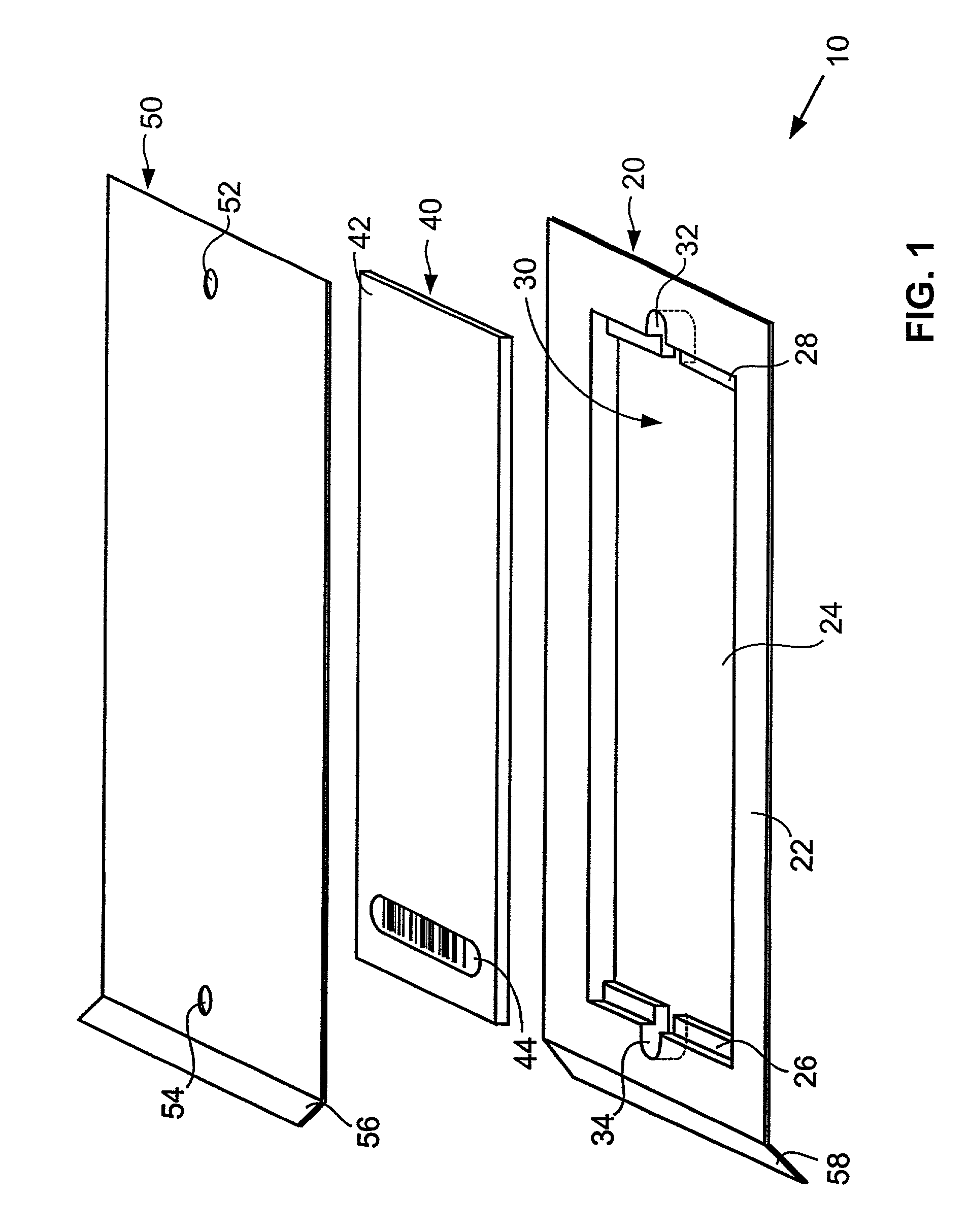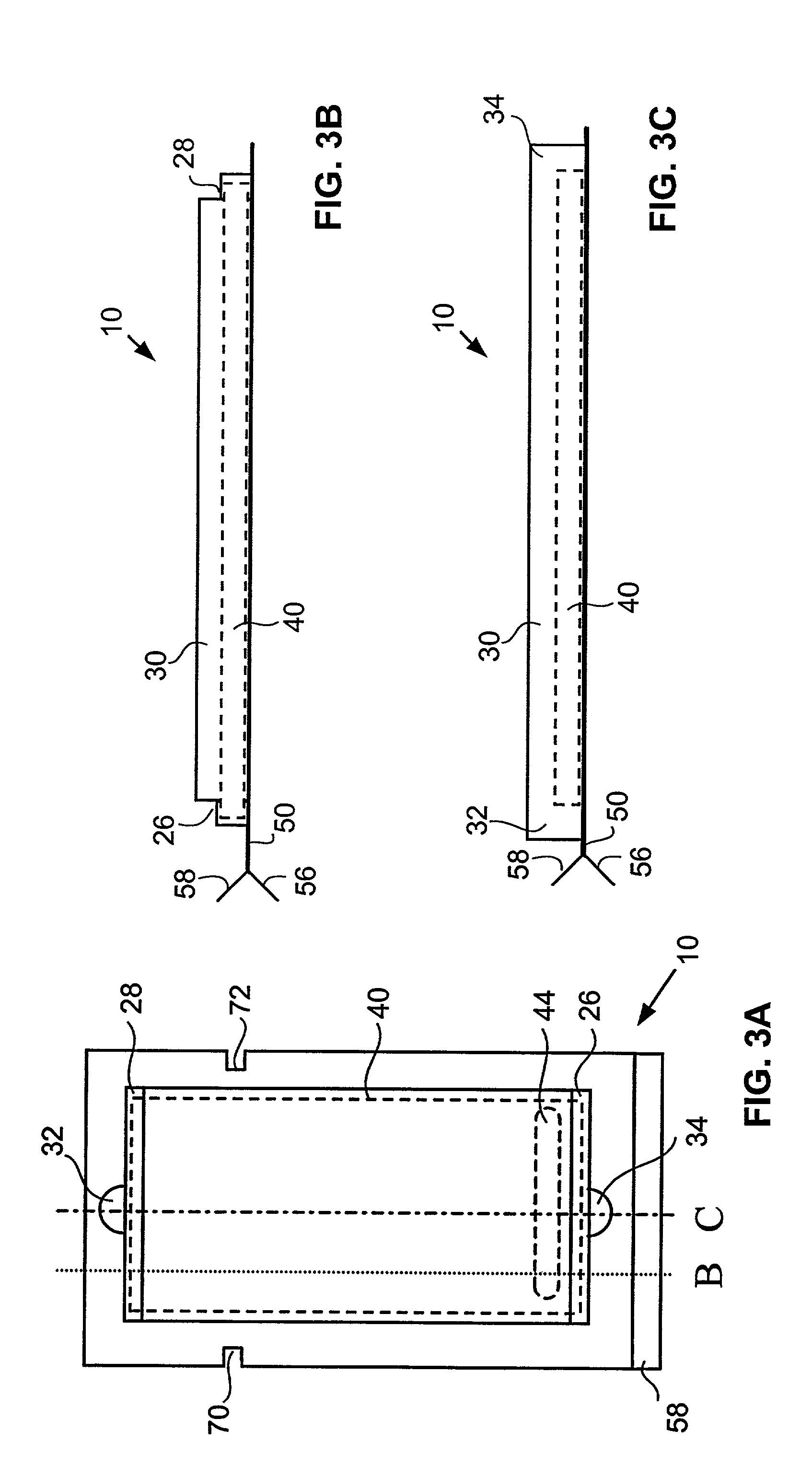Microarray reaction cartridge
a technology of reaction cartridge and microarray, which is applied in the field of microarray processing, can solve the problems of not providing adequate protection during shipping and storage, affecting the array of biological probes, and destroying the microarray substrate, etc., and achieves the effects of optimizing cost, limiting possible damage to the microarray, and optimizing cos
- Summary
- Abstract
- Description
- Claims
- Application Information
AI Technical Summary
Benefits of technology
Problems solved by technology
Method used
Image
Examples
Embodiment Construction
[0028]This section presents a detailed description of the apparatus of the present invention and methods of their use. In particular, Section 5.1 describes various exemplary embodiments of the microarray cartridges of the present invention, including a single microarray cartridge, a multi-microarray cartridge, and a cartridge designed to enhance fluid motion over a microarray. Section 5.2 describes microarrays generally and their methods of preparation. Section 5.3 generally describes high-throughput methods of processing microarrays using the apparatus of the present invention.
5.1. Microarray Cartridges
[0029]Referring to FIG. 1, an exemplary microarray cartridge 10 according to the present invention generally comprises a body 20 and a plate, or cover 50. The body 20 includes a central cavity 24 and supports, or ledges 26, 28, within the cavity for supporting a microarray 40 of nucleic acid probes. Ledges 26, 28, are configured to support microarray 40 at its edges or corners, and a...
PUM
| Property | Measurement | Unit |
|---|---|---|
| thickness | aaaaa | aaaaa |
| thickness | aaaaa | aaaaa |
| thickness | aaaaa | aaaaa |
Abstract
Description
Claims
Application Information
 Login to View More
Login to View More - R&D
- Intellectual Property
- Life Sciences
- Materials
- Tech Scout
- Unparalleled Data Quality
- Higher Quality Content
- 60% Fewer Hallucinations
Browse by: Latest US Patents, China's latest patents, Technical Efficacy Thesaurus, Application Domain, Technology Topic, Popular Technical Reports.
© 2025 PatSnap. All rights reserved.Legal|Privacy policy|Modern Slavery Act Transparency Statement|Sitemap|About US| Contact US: help@patsnap.com



